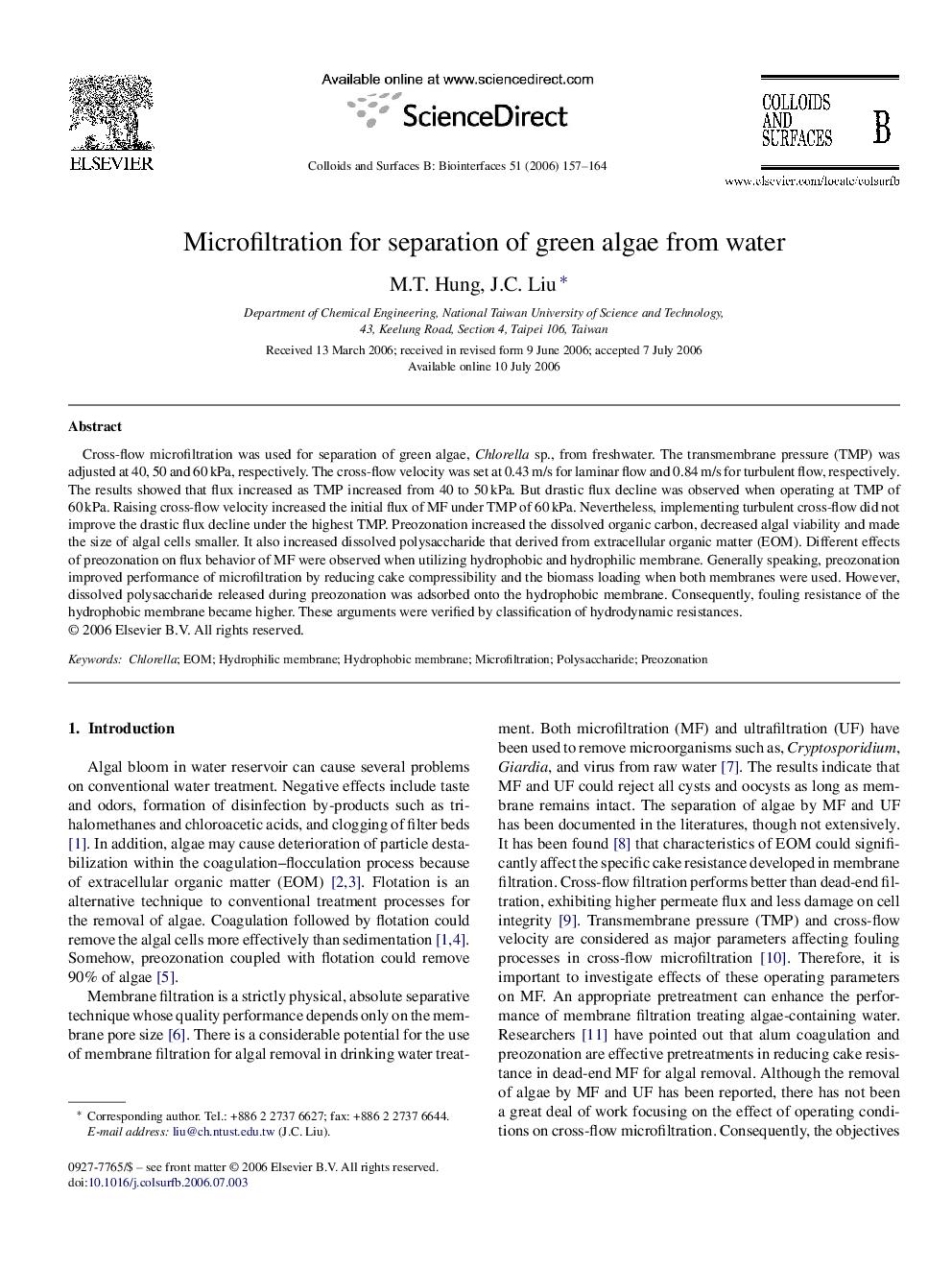| Article ID | Journal | Published Year | Pages | File Type |
|---|---|---|---|---|
| 603001 | Colloids and Surfaces B: Biointerfaces | 2006 | 8 Pages |
Cross-flow microfiltration was used for separation of green algae, Chlorella sp., from freshwater. The transmembrane pressure (TMP) was adjusted at 40, 50 and 60 kPa, respectively. The cross-flow velocity was set at 0.43 m/s for laminar flow and 0.84 m/s for turbulent flow, respectively. The results showed that flux increased as TMP increased from 40 to 50 kPa. But drastic flux decline was observed when operating at TMP of 60 kPa. Raising cross-flow velocity increased the initial flux of MF under TMP of 60 kPa. Nevertheless, implementing turbulent cross-flow did not improve the drastic flux decline under the highest TMP. Preozonation increased the dissolved organic carbon, decreased algal viability and made the size of algal cells smaller. It also increased dissolved polysaccharide that derived from extracellular organic matter (EOM). Different effects of preozonation on flux behavior of MF were observed when utilizing hydrophobic and hydrophilic membrane. Generally speaking, preozonation improved performance of microfiltration by reducing cake compressibility and the biomass loading when both membranes were used. However, dissolved polysaccharide released during preozonation was adsorbed onto the hydrophobic membrane. Consequently, fouling resistance of the hydrophobic membrane became higher. These arguments were verified by classification of hydrodynamic resistances.
